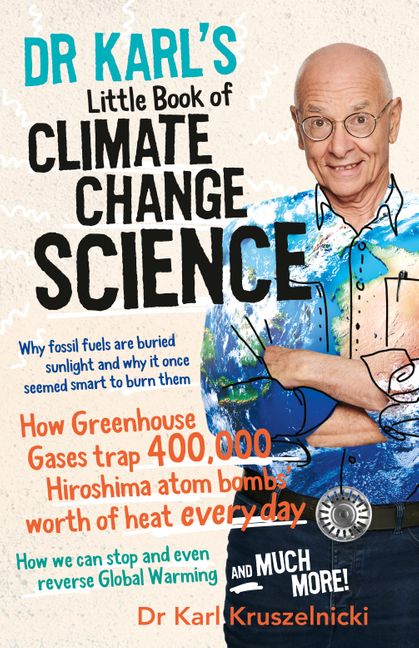Report on the Impact of Climate-Induced Extreme Weather on Food Prices and Sustainable Development Goals
Executive Summary
A recent study led by the Barcelona Supercomputer Center provides critical evidence that extreme weather events, exacerbated by climate change, are directly causing significant and rapid increases in the prices of basic food products globally. These price shocks pose substantial risks to society and directly impede progress toward several key Sustainable Development Goals (SDGs), including those concerning poverty, hunger, health, and climate action. The research analyzed 16 instances of short-term price spikes across 18 countries between 2022 and 2024, linking them to unprecedented heat, drought, and precipitation.
Key Findings: Climate-Driven Food Price Inflation (2022-2024)
The study documents numerous cases where extreme weather led to dramatic food price inflation, undermining food system stability. Notable examples include:
- Vegetables (USA): Prices rose by 80% in California and Arizona in November 2022 compared to the previous year, following extreme summer heat and water shortages.
- Cabbage (South Korea): A 70% price increase was recorded in September 2023 after a severe August heatwave.
- Olive Oil (Europe): Prices increased by 50% by January 2024 due to prolonged drought conditions in Italy and Spain throughout 2022 and 2023.
- Fruit and Vegetables (Mexico): A severe drought contributed to a 20% price increase in January 2024.
- Rice (Japan): Prices soared by 48% in September 2024 after the region’s hottest summer on record.
- Cocoa (Global): A heatwave in Ghana and Ivory Coast, which account for nearly 60% of global production, led to a 280% surge in global cocoa prices by April 2024.
Implications for Sustainable Development Goals (SDGs)
The documented price volatility has profound and detrimental consequences for the 2030 Agenda for Sustainable Development. The impacts are interconnected, creating a cascading crisis that affects multiple goals.
- SDG 2 (Zero Hunger): Rising food costs directly threaten food security. Price spikes make nutritious food unaffordable for vulnerable populations, increasing the risk of malnutrition and hampering efforts to eradicate hunger.
- SDG 3 (Good Health and Well-being): As prices for healthy foods like fruits and vegetables increase, low-income households are often forced to choose cheaper, less nutritious alternatives. This trend contributes to negative health outcomes, including malnutrition, Type 2 diabetes, and heart disease.
- SDG 1 (No Poverty) & SDG 10 (Reduced Inequalities): Food price inflation disproportionately impacts the poorest households, which spend a larger percentage of their income on food. This exacerbates poverty, widens the inequality gap, and fuels a persistent cost-of-living crisis.
- SDG 13 (Climate Action): The findings serve as a stark reminder of the tangible consequences of inaction on climate change. The report emphasizes that until net-zero emissions are achieved, extreme weather events and their associated economic shocks will only intensify.
- SDG 16 (Peace, Justice and Strong Institutions): The study highlights that sharp increases in food prices can worsen overall inflation, leading to significant societal risks such as political unrest and social upheaval, thereby threatening peace and stability.
Expert Analysis and Future Outlook
Experts warn that these trends signal a new era of instability for global food systems, demanding urgent and coordinated responses.
- Maximillian Kotz (Potsdam Institute for Climate Impact Research): Notes that extreme weather is already damaging crops and raising food prices worldwide, an impact citizens are experiencing directly, second only to extreme heat itself. He stresses that this will worsen until net-zero emissions are reached.
- Tim Benton (University of Leeds): Suggests that the world is facing a future where volatility is the norm, resulting in a “permanent ‘cost-of-living’ crisis.” He adds that these impacts are exacerbated by global trade stress from conflict and disputes, underscoring the urgent need to tackle climate change.
Conclusion
The evidence unequivocally demonstrates that climate change is a primary driver of food price inflation, creating a multi-faceted crisis that threatens global stability and development. Addressing this challenge requires integrated strategies that link robust climate action (SDG 13) with policies aimed at building resilient food systems and advancing social and economic well-being (SDGs 1, 2, 3, 10). The upcoming UN Food Systems Summit Stocktake provides a critical opportunity for world leaders to confront these threats to the global food system and reinforce commitments to the Sustainable Development Goals.
1. Which SDGs are addressed or connected to the issues highlighted in the article?
SDG 2: Zero Hunger
- The article’s central theme is the impact of extreme weather on food prices and availability. It directly discusses rising costs of basic foods like vegetables, rice, and olive oil, which threatens food security and access to nutritious food, a core component of SDG 2. The text states, “Extreme weather caused by climate change is driving up the prices of basic food products worldwide,” and highlights how this can lead to “malnutrition.”
SDG 3: Good Health and Well-being
- The article connects rising food prices to negative health outcomes. It notes that when healthy food becomes more expensive, “low income households to cut back on nutritious food like fruit and vegetables.” This behavior is linked to “health complications like malnutrition, Type 2 diabetes and heart disease,” which are directly relevant to ensuring healthy lives and promoting well-being for all.
SDG 13: Climate Action
- This goal is the root cause of the problems discussed. The article explicitly states that “Extreme weather caused by climate change is driving up the prices” and that events were “so extreme they exceeded all historical precedent prior to 2020.” It quotes an expert saying, “Until we get to net-zero emissions, extreme weather will only get worse,” directly calling for urgent climate action.
2. What specific targets under those SDGs can be identified based on the article’s content?
SDG 2: Zero Hunger
- Target 2.1: By 2030, end hunger and ensure access by all people, in particular the poor and people in vulnerable situations, including infants, to safe, nutritious and sufficient food all year round.
- The article highlights this target by explaining that price hikes force “low income households to cut back on nutritious food like fruit and vegetables,” directly impacting their access to sufficient and nutritious food.
- Target 2.4: By 2030, ensure sustainable food production systems and implement resilient agricultural practices that increase productivity and production… that strengthen capacity for adaptation to climate change, extreme weather, drought, flooding and other disasters.
- The article details how agricultural systems are failing to cope with climate shocks. Examples like “extreme heat and water shortages” in the US, “prolonged drought” in Europe, and a “heatwave” in Japan damaging crops show a lack of resilience, which this target aims to address.
- Target 2.c: Adopt measures to ensure the proper functioning of food commodity markets… in order to help limit extreme food price volatility.
- The entire article is an exposition on extreme food price volatility. The dramatic price spikes mentioned—”vegetables rose by 80%”, “cocoa prices rise by a massive 280%”—are precisely the issue this target seeks to mitigate.
SDG 3: Good Health and Well-being
- Target 3.4: By 2030, reduce by one third premature mortality from non-communicable diseases through prevention and treatment and promote mental health and well-being.
- The article connects food price issues directly to non-communicable diseases by highlighting the risk of “Type 2 diabetes and heart disease” as a “knock-on societal risk” from poor nutrition.
SDG 13: Climate Action
- Target 13.1: Strengthen resilience and adaptive capacity to climate-related hazards and natural disasters in all countries.
- The article’s examples from California, South Korea, Mexico, Japan, and Ghana demonstrate the widespread vulnerability of global food systems to climate-related hazards like heatwaves and droughts, underscoring the need for greater resilience and adaptive capacity.
3. Are there any indicators mentioned or implied in the article that can be used to measure progress towards the identified targets?
Indicators for SDG 2
- Indicator 2.c.1 (Indicator of food price anomalies): This is the most prominent indicator in the article. It is explicitly measured through numerous examples of price spikes: “vegetables rose by 80% in California and Arizona,” “Cabbage prices in South Korea were 70% higher,” “olive oil shot up by 50%,” “Rice prices soared by 48%,” and “global cocoa prices rise by a massive 280%.” These figures directly quantify food price volatility.
- Prevalence of malnutrition (related to Target 2.1): While not providing specific data, the article implies this indicator by stating that price hikes lead to “knock-on societal risks,” including “malnutrition.”
Indicators for SDG 3
- Mortality rate from non-communicable diseases (related to Target 3.4): The article implies the relevance of this indicator by linking poor dietary choices caused by high food prices to an increased risk of “Type 2 diabetes and heart disease.”
Indicators for SDG 13
- Total greenhouse gas emissions (related to Target 13.2): This is implied through the call to action: “Until we get to net-zero emissions, extreme weather will only get worse.” Achieving net-zero is a direct measure related to tracking greenhouse gas emissions.
4. Table of SDGs, Targets, and Indicators
| SDGs | Targets | Indicators Identified in the Article |
|---|---|---|
| SDG 2: Zero Hunger |
2.1: Ensure access to safe, nutritious and sufficient food.
2.4: Ensure sustainable and resilient agricultural practices. 2.c: Limit extreme food price volatility. |
Indicator of food price anomalies (2.c.1): Explicitly measured with price increases for vegetables (80%), cabbage (70%), olive oil (50%), rice (48%), and cocoa (280%).
Prevalence of malnutrition: Implied as a “knock-on societal risk” of high food prices. |
| SDG 3: Good Health and Well-being | 3.4: Reduce premature mortality from non-communicable diseases. | Mortality/prevalence of non-communicable diseases: Implied by linking poor nutrition to risks of “Type 2 diabetes and heart disease.” |
| SDG 13: Climate Action | 13.1: Strengthen resilience and adaptive capacity to climate-related hazards. | Total greenhouse gas emissions: Implied by the expert quote urging action “Until we get to net-zero emissions.” |
Source: cnn.com






